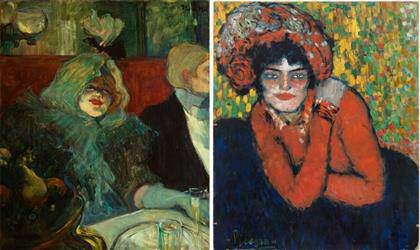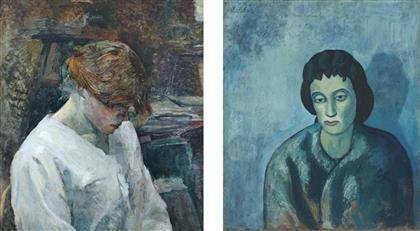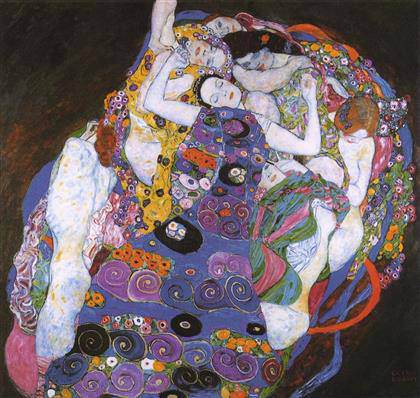
Henri de Toulouse-Lautrec. “In a Private Dining Room (At the Rat Mort)”, c. 1899. The Samuel Courtauld Trust, The Courtauld Gallery, London / Pablo Picasso. “The Wait (Margot)”, Paris, spring 1901. Museu Picasso, Barcelona

Henri de Toulouse-Lautrec. The Redhead in a White Blouse, 1889. Museo Thyssen-Bornemisza, Madrid / Pablo Picasso. Woman with Bangs , Barcelona, 1902. Baltimore Museum of Art, The Cone Collection, formed by Dr Claribel Cone and Miss Etta Cone of Baltimore, Maryland
Museo Thyssen-Bornemisza presents ‘Picasso/Lautrec’ The Museo Nacional Thyssen-Bornemisza presents “Picasso/Lautrec”, the first monographic exhibition devoted to comparing these two great masters of modern art. From 17 October 2017 to 21 January 2018.]]>
Source: Museo Nacional Thyssen-Bornemisza
Although their artistic link has been repeatedly established by literature and contemporary critics, this is the first time their works have been displayed alongside each other in an exhibition. The show also examines this fascinating relationship from new viewpoints, as it does not merely explore the cliché of the young Picasso as an admirer of Lautrec in Barcelona and his early years in Paris, but traces the latter’s lingering influence throughout the Spanish artist’s lengthy career, including his final period.
Henri de Toulouse-Lautrec (Albi, 1864‒Château Malromé, Saint-André-du-Bois, 1901) and Pablo Picasso (Málaga, 1881‒Mougins, 1973) never met. By the time Picasso visited Paris for the first time in October 1900, Lautrec was seriously ill and died prematurely the following year. Even so, Lautrec’s radical oeuvre and his conception of modernity made a very powerful impact on the young Picasso. Through him, Picasso discovered the many facets of modern society, which influenced his approach to art.
Lautrec’s artistic career lasted barely fifteen years, whereas Picasso’s spanned more than seven decades. Both were brilliant artists from childhood, were attracted by Paris during their youth and rejected the academic teachings imposed on them, and both borrowed successively from very similar historical sources, such as the French artists Ingres and Degas as well as El Greco. But above all, their mastery of drawing was one of the key factors that gave meaning to both artists’ oeuvre. Both Lautrec and Picasso drew compulsively throughout their lives, had a special fondness for line and caricature, and filled hundreds of notebooks with extraordinarily skilled drawings from a very early age. It can be said that both men thought and expressed themselves in drawing and that any new work was preceded by endless testing and experimentation on paper.
Divided into five sections based on the themes that linked the two artists’ worlds symbolically and formally – Bohemians, Underworld, Wanderers, Elles and Hidden Eros – Picasso/Lautrec also provides an insight into the evolution of contemporary art.
Related content
Toulouse-Lautrec’s prints and posters at the MoMA (exhibition, 2014)
Follow us on:


